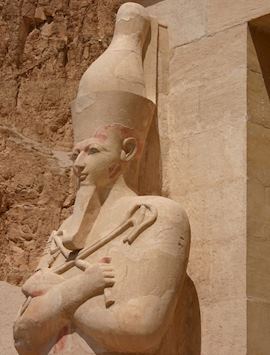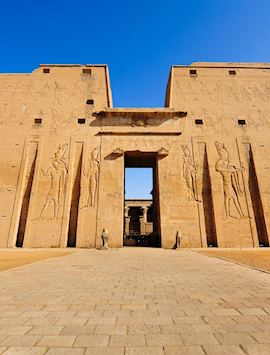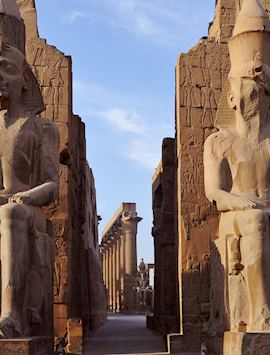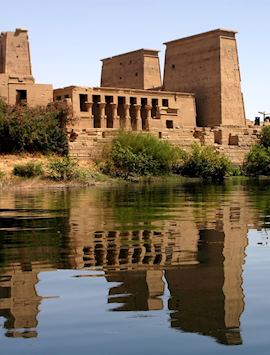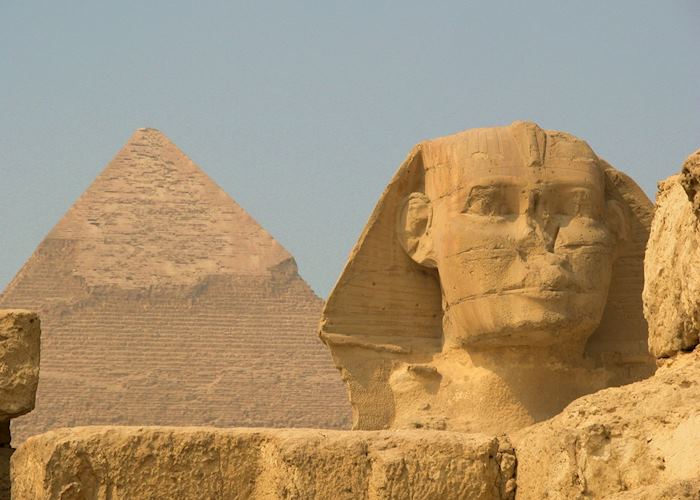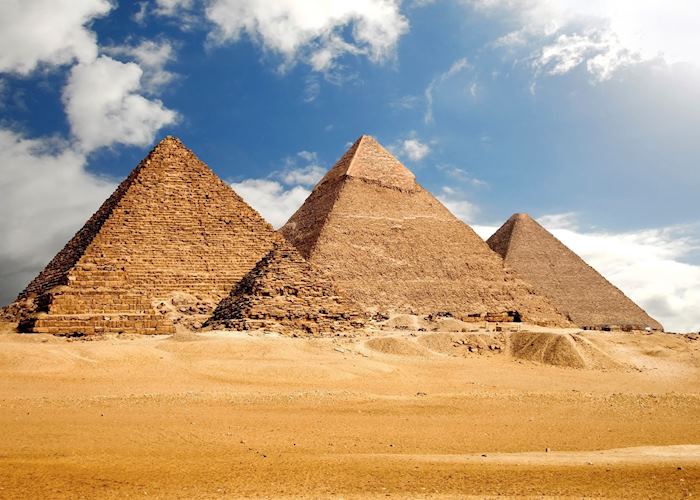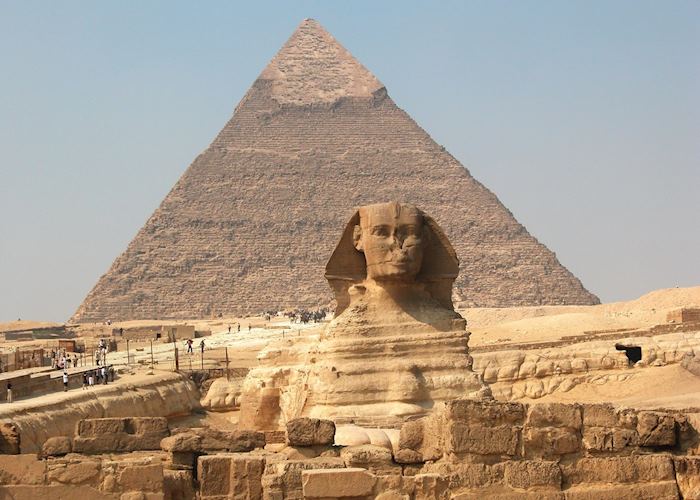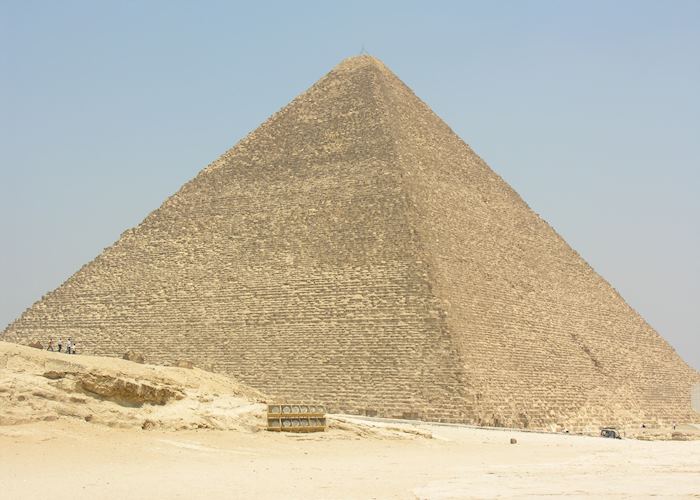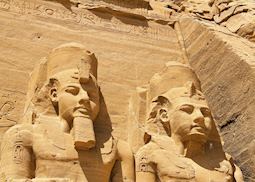Jump to:
More than any other monument, the Pyramids of Giza symbolize the mystic appeal that Egypt has exerted over travelers for so many millennia.
The instantly recognized tableau of the Great Pyramid of Cheops, the Pyramid of Chephren, and the smaller, flanking Pyramid of Mycerinus dominates the Giza skyline, sitting on the fringes of the ever-expanding city, facing urban streets to the north and east, and staring south and west over the endless desert sands.
The Sphinx
Sentinel to the pyramids, the Sphinx sits in enigmatic splendor, nursing a beard trimmed by Mamluke and Napoleonic target practice.
Around Giza
 Beyond Giza lie the pyramid fields of Saqqara and Dahshur where the development of pyramid building can be traced through early attempts at their construction, and the ancient city of Memphis, the first capital of a unified Egypt.
Beyond Giza lie the pyramid fields of Saqqara and Dahshur where the development of pyramid building can be traced through early attempts at their construction, and the ancient city of Memphis, the first capital of a unified Egypt.
who's been there
-
617-223-4521617-223-4780
- Make an inquiry
Suggested itineraries featuring Giza
Our itineraries will give you suggestions for what is possible when you travel in Giza, and they showcase routes we know work particularly well. Treat them as inspiration, because your trip will be created uniquely by one of our specialists.
Places near Giza
- Cairo 8 miles away
- Saqqara 11 miles away
- Dahshur 17 miles away
- Alexandria 112 miles away
- El Alamein & the Mediterranean Coast 144 miles away
- Hurghada 249 miles away
- The Red Sea 296 miles away
Photos of Giza
Our expert guides to exploring Giza
Written by our specialists from their own experiences of visiting Giza, these guides will help you make the most of your time there. We share both our practical recommendations and the best ways to appreciate Giza at its best.
-
Past civilizations of Ancient Egypt ![Abu Simbel, Egypt]()
Past civilizations of Ancient Egypt
Past civilizations of Ancient Egypt
Discover the culture and history of Ancient Egypt on a tailor-made vacation. Our knowledgeable specialists can create a unique itinerary for you that suits your interests, including a few places that you might not have known about.
Read this guide -
What to do in Egypt: our highlights guide ![Step Pyramid of Djoser, Saqqara]()
What to do in Egypt: our highlights guide
What to do in Egypt: our highlights guide
Home to some of the world's most historical monuments and best dive sites, Egypt's size makes it possible for the first-time visitor to see many of its highlights in a relatively short trip.
Read this guide -
Luxury Egypt: live like a pharaoh ![Marriott Mena House, Cairo]()
Luxury Egypt: live like a pharaoh
Luxury Egypt: live like a pharaoh
A room at the foot of the Great Pyramid, an opulent ship on the Nile, and private guides — Egypt specialist Emma outlines the most indulgent ways to enjoy the country’s classic sights.
Read this guide -
Family vacations in Egypt ![Giza pyramids and Sphinx, Cairo]()
Family vacations in Egypt
Family vacations in Egypt
If you're planning a family vacation to Egypt we can recommend family friendly activities as well as suitable places to stay. This captivating country has a very low malaria risk.
Read this guide



